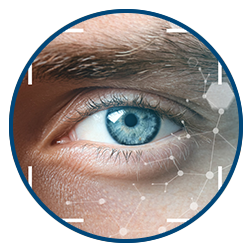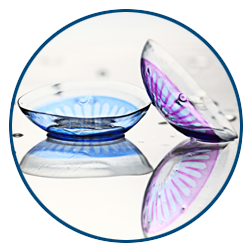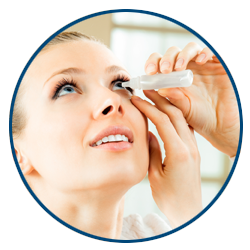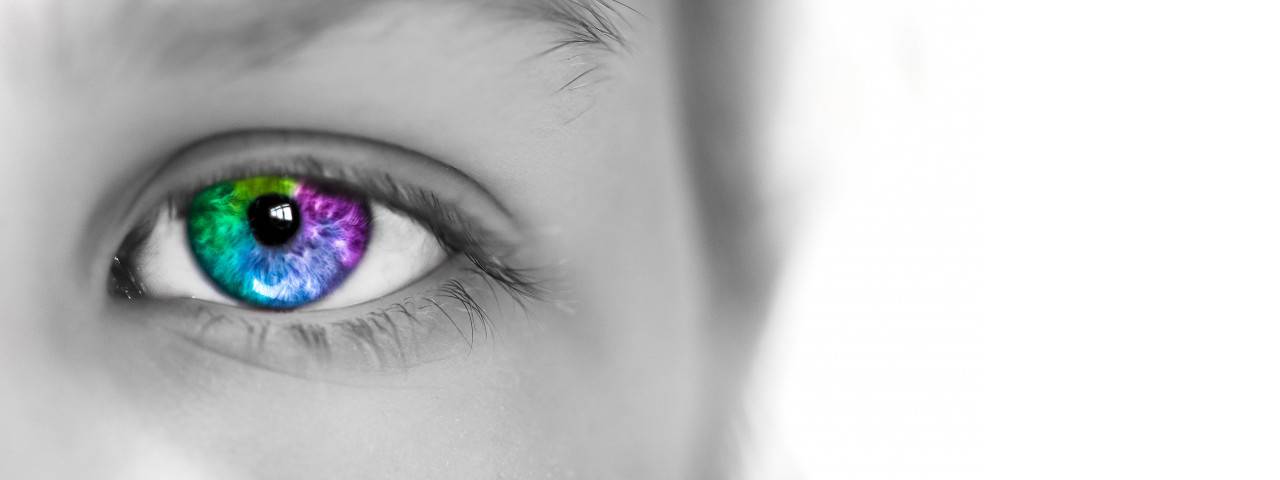
Color Vision Correction in Owings Mills and Baltimore, MD
Color blindness, also known as Color Vision Deficiency or CVD, means that your eyes do not see color the way they should. Light has different wavelengths, which is what causes different colors. Every color corresponds to a different wavelength; for example, red hues have a long wavelength, and bluish hues have a shorter one. If you have color blindness, your eyes do not react to the varying wavelengths.
When you visit our Owings Mills and Baltimore, Maryland, eye doctor for an eye exam, we will evaluate your color vision.
How Color Vision Works
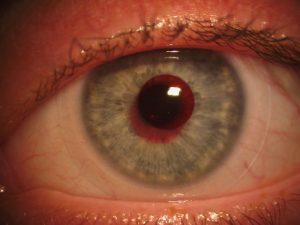
The front part of your eye has a lens and the back, inner part is the retina. When you look at an image, your lens focuses it on the retina, which is composed of specialized nerve cells called rods and cones. Cones control your color vision, while rods are highly light sensitive and enable you to see at night.
There are three types of cone cells, and each type contains pigments, called photopigments, that react to different wavelengths. If you are missing one of these photopigments, you will have trouble seeing specific colors. If you don’t have any photopigments at all, you won’t be able to see any colors.
Types of Color Blindness
The most common types of color blindness are due to an inherited problem with your photopigments.
- Red-Green Color Blindness: when the red or green cones don’t function properly or don’t exist; this is the most common form of color blindness. If you have a problem with your green cones, you may see yellow-green colors as reddish, and you won’t be able to differentiate between violet and blue. If you have absolutely no green cone cells that work, you will see reds as brownish-yellow, and greens may appear beige.
Other people with red-green color blindness have a disorder with their red cones that makes orange and red appear greenish. If you have zero functioning red cones cells, which is rarer, red tones just look black.
- Blue-Yellow Color Blindness: when the blue cone photopigments don’t work right or are missing; this type is rare. If your blue cone cells function only minimally, blue will look greener and it can be difficult to discern pink from yellow. If you have no blue cone cells, you will see green instead of blue and light gray or violet instead of yellow.
- Complete Color Blindness (Monochromacy): when your cone cells do not have functional photopigments, so you cannot see any color at all. With this most severe type, the world appears in black, white, and gray.
Diagnosing Color Blindness
A variety of tests can detect color blindness and identify the particular type. Our Owings Mills optometrist may use the following:
- Ishihara color test: You will need to view a series of “plates” (circles) with different colored and sized dots. Some of the dots form a number or shape. If you cannot see red and green, you will have trouble seeing these shapes.
- Cambridge color test: With a similar design as the Ishihara plates, but this test uses a computer screen.
- Anomaloscope: You will look through an eyepiece to view a circle that has a yellow light for the top half and red and green lights for the bottom half. You will need to adjust the colors until both halves match in color and brightness.
- Farnsworth-Munsell 100 hue test: We will provide you with blocks or pegs that are varying shades of the same color, and you will need to line them in a certain way. This test assesses the ability to detect subtle color changes.
- Farnsworth lantern test: This test is commonly used by the U.S. military to determine if recruits have color blindness, and if it is mild or severe.
Effects of Color Blindness on Your Life
 Typically, inherited color blindness (not caused by a different disease or injury) does not lead to any other health problems. While it is not regarded as a serious health problem, it can be frustrating and make some activities tricky.
Typically, inherited color blindness (not caused by a different disease or injury) does not lead to any other health problems. While it is not regarded as a serious health problem, it can be frustrating and make some activities tricky.
Seeing traffic lights and brake lights may be difficult when driving, and figuring out how to coordinate your clothing can be a puzzle. Also, color blindness may prevent you from getting certain jobs that demand precise color vision.
Working as an aviator or being in the military can pose a challenge for people with color vision deficiency. For example, night flying and being able to distinguish between green and red position locating lights on aircraft may be hard.
Or seeing LED readouts on instruments and noticing the color of warning lights. If you are interested in a military career and you have color blindness, Dr. Moshe Schwartz, our Color Blindness Correction Expert serving Owings Mills and Baltimore, can diagnose your condition precisely to provide effective color vision correction.
Color Vision Correction in Owings Mills, MD
Color vision correction cannot give you perfect color vision, but it can help you see a wider rainbow of colors and enhance color perception. It can also make colors clearer and more vibrant.
At EyeSymmetry’s Color Blindness Correction Center, Dr. Schwartz can customize prescription Specialty Color Corrective lenses for you to help your eyes compensate for the missing photopigments. These personalized contact lenses will intensify colors, making them more distinct.
As a result, you will be able to identify a broader spectrum of colors easily and quickly. These specialized lenses can help you to pass the Ishihara Color Plate Test, Farnsworth-Munsell 100 Hue Color Vision Test, and other color blindness screening procedures.
Dr. Schwartz specializes in helping to resolve color blindness for various jobs or testing. For more information about how we can help with color vision deficiency, call EyeSymmetry Vision Center in Owings Mills to book your free consultation.

